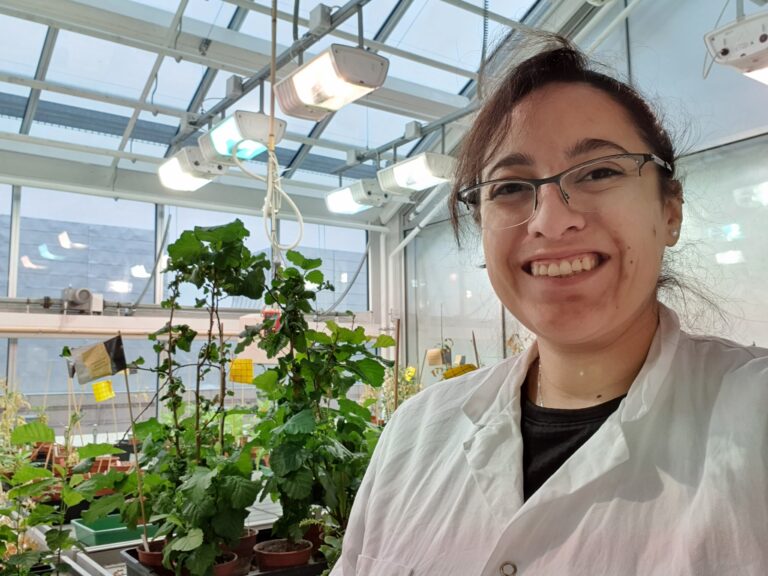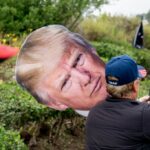
Not everyone is lucky enough to love what they pursue in university. Fewer still like their subject by the end of their degree and continue to do so in their ensuing careers.
Some feel indifferent about their degrees from the very beginning, while others grow weary of them throughout their programmes. It has reached the point that the Wall Street Journal reports that roughly half of college graduates work in jobs vastly different from their degrees.
Maru Bernal doesn’t relate to that.
Hailing from Mexico, she had chosen to study biology, completed several degrees in this field and is now a plant biologist.
But Bernal never expected her university degree to lead her to becoming a plant biologist.
As an undergraduate in biology at the National Autonomous University of Mexico, she had been working towards exploring a future in medicine.
How to find your passions during your time at university

Bernal’s botany course was a compulsory module in her undergraduate biology studies, and it was what opened the doors for the future plant biologist. Source: Maru Bernal.
It was the first semester of her second year that her future as a plant biologist began falling into place, first with attending the compulsory module for botany.
Bernal credits the course’s professors for sparking her interest in the subject. Before, plants were just something in the background, a pretty sight to admire and move on. But the module changed how Bernal looked at them, opening her eyes to their sheer variety and resilience within different environments.
“I was impressed in that moment of learning, but I have never been interested in how they survive,” says Bernal.
Until, of course, she came across ribbon-like plants during one of her dives – another thing she picked up during the first semester of her second year.

During her undergraduate studies, Bernal also found a new passion for scuba diving. Source: Maru Bernal.
Growing up in landlocked Mexico City, Bernal didn’t spend much time around the ocean. So when a classmate spoke enthusiastically about his diving adventures, sharing extraordinary stories with Bernal and her class, she gave scuba diving a shot.
“I like swimming in general, and I thought that it wouldn’t be a bad idea to try a new sport and learn a new skill,” says Bernal. “It was a coincidence that my botany course and scuba diving activities happened in the same semester.”
Her first thought during that dive where she encountered the plantlife was it must’ve been algae – a simple, non-flowering, aquatic plant. Regardless, the sight made for a pleasant memory, one that Bernal requested her diving instructor to snap a picture of as a keepsake.
“But then I was wondering what the plant really was and what type of species it was, and that’s when I found out that it was not algae, it was actually seagrass – flowering plants that lived in the ocean,” says Bernal.
That was the instance that marked Bernal’s first contact with seagrass; just like that, she dived head-first into the world.
“That’s when it all started – I knew I wanted to be in the seagrass world,” she says.
Her bachelor’s dissertation was on syringodium filiforme – a type of seagrass more commonly known as manatee grass. The species is found forming meadows in shallow sandy or muddy locations in the Caribbean Sea and the Gulf of Mexico, exactly where Bernal first encountered it. Bernal explored the syringodium’s flower development in her dissertation, covering its anatomy, morphology, and growth.
The path to becoming a plant biologist

Bernal pictured with coursemates during her botany module. Source: Maru Bernal.
However, her work with seagrass quickly came to a stop. Aside from scuba diving, Bernal’s interactions with the flowering plant didn’t amount to much, especially after she completed her undergraduate studies.
For three years after graduation, Bernal worked as a scientific advisor for a consulting company, was a biology and English teacher, and even became a scuba diving instructor. It was an enjoyable time, but something was missing.
“I was really happy that I enjoyed my job and everything involved,” says Bernal. “But one day, I realised that although I was very, very happy, I didn’t feel fulfilled. When I’m doing science, it’s this excitement and adrenaline all the time.”
Bernal liked the feeling of wanting to know — something she couldn’t find through her work. She just wasn’t excited about it. “That was when I thought that it was time to try again. I wasn’t sure I wanted to be back in the academic scene, but I really missed being there and wanted that feeling of excitement again,” she says.
At this point, Bernal began earnestly looking into a master’s programme, one that would give her the same fulfilment – if not more – than her bachelor’s did. She was ready to re-enter the world of seagrass, this time seeking short-term and long-term solutions to help its environmental conservation.
Here, she read academic papers to learn about what was happening around the world and different strategies for protecting these habitats.
It was by luck that she found research published by Marlene Jahnke, a molecular ecologist focusing on conservation genetics. Jahnke, a researcher at the Tjärnö Marine Laboratory at the Department of Marine Sciences in Sweden’s University of Gothenburg, also taught topics revolving around seascape genetics and genomics, evolutionary biology and seagrasses.
“I was reading several of her papers, and it was interesting because there was a strategy behind it based on information instead of just trying and trying and failing and failing,” says Bernal. “I literally just wrote an email to Marlene, like ‘Hello, I read some of your papers, and I’m pretty interested in what you’re doing. Would you like to have a master’s student?’”
Luck remained on Bernal’s side when Jahnke replied with an interview opportunity.
The next thing Bernal knew, she was a master’s student in the field of genetic and molecular plant science in Sweden.
Tips on writing an award-winning dissertation

Bernal pictured with a fellow master’s coursemate holding a clump of seagrass. Source: Maru Bernal / Ellika Faust.
For someone whose first language is not English and who had completed her undergraduate studies almost completely in Spanish, Bernal struggled to complete an English-taught master’s degree in Sweden.
“My first language is Spanish, but I was lucky enough that I received English lessons since I was young,” says Bernal. “The biggest challenge is to express yourself in formal scientific language and writing to bring out all the ideas. I was used to thinking and writing in Spanish, and now I have to think and write in English.”
Still, a language barrier didn’t stop this plant biologist from producing an award-winning master’s dissertation.
Bernal’s research on genetic diversity in eelgrass (Sweden’s dominant seagrass, commonly called marine eelgrass) meadows earned her the first prize in the Swedish Society for Marine Sciences’ Dyrssen Award 2023, an annual award for master’s degree projects in marine sciences in Sweden.
Bernal hadn’t even been aware of the award’s existence until she completed her work.
“When I handed in and presented the report, my supervisor told me about the award,” says Bernal. “She was like, ‘I think you did a really good job, and you put so much effort, so I would like to nominate you for this award. Can I nominate you?’ And I agreed.”

Maru’s path to becoming a plant biologist involves conducting fieldwork in Sweden. Source: Maru Bernal / Ellika Faust.
So, what does it take to write such an award-winning dissertation, especially when it’s not in your first language?
“I think I would like to know that,” laughs Bernal. “No, I guess I would say two major elements. One is that I’m really crazy about seagrasses, so I live with a lot of passion. I really want to learn more about it and do something to help seagrasses in general. So I was very motivated and willing to do everything and work as many hours as needed.”
“The second point was the support from my supervisor,” says Bernal. “She was always encouraging me to do more. She’d tell me the work was good, but she would always give a little kickback and then propose more things, like ‘Do these and probably try to do something and then try this other thing.’ So I always got more out of the work because I’d like, ‘Okay, let’s try these, and then let’s try that.’”
And there’s no stopping passion – Bernal is now preparing to begin her PhD at the University of Gothenburg. There, she will continue exploring how genomics can protect and enhance eelgrass, part and parcel of her dream of environmental conservation for seagrass ecosystems worldwide.
“My PhD will be about trying to find out if we can, or if it’s a feasible strategy to select the most persistent seagrass phenotypes and try to restore other seagrasses with those,” says Bernal.
“In simple terms, imagine we have a garden that just happens to be underwater, and if temperatures rise in the ocean, some of these plants die, but others continue to grow. So we’re trying to see if we can use genetics to identify these tolerant individuals and use them to enhance and protect other seagrass meadows.”

Lucky for Bernal, diving for seagrass is a common task as a plant biologist specialising in this underwater flowering plant. Source: Maru Bernal / Ellika Faust.
For Bernal, the work presents an interesting intersection of being a marine and plant biologist.
“I think it’s a funny story because I am not a marine biologist, but I did study biology and only biology. And when I was doing that, I chose botany as one of my courses,” she says. “Even now, I feel more of a strong connection to being a plant biologist because I don’t really have a strong background as a marine biologist. But then, working with seagrasses, which are underwater, means that I also have that marine knowledge of things.”
In the end, Bernal has ended up being part of two worlds. Whether she holds the title of plant biologist or marine biologist, she’s enthusiastic about her upcoming research with seagrass and the environmental conversation that comes with it.










